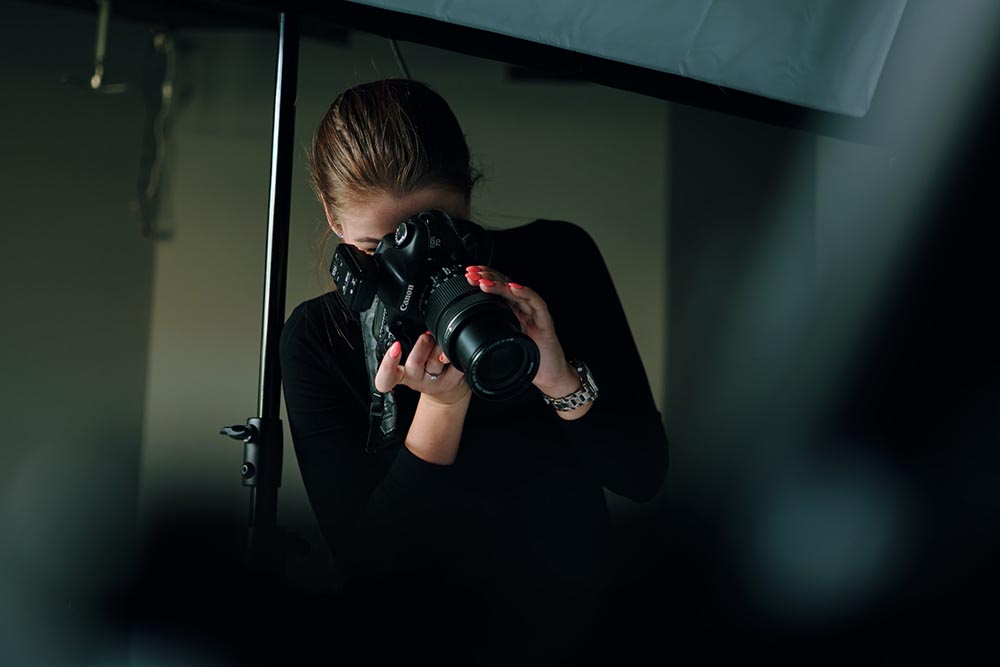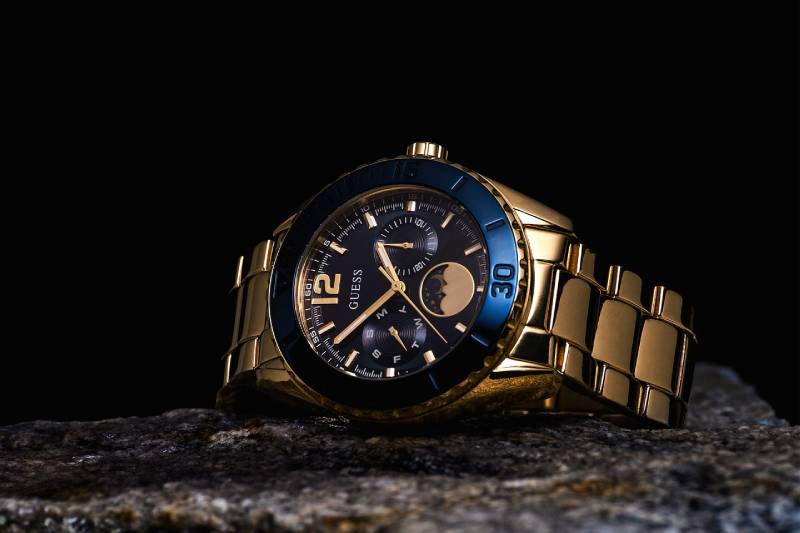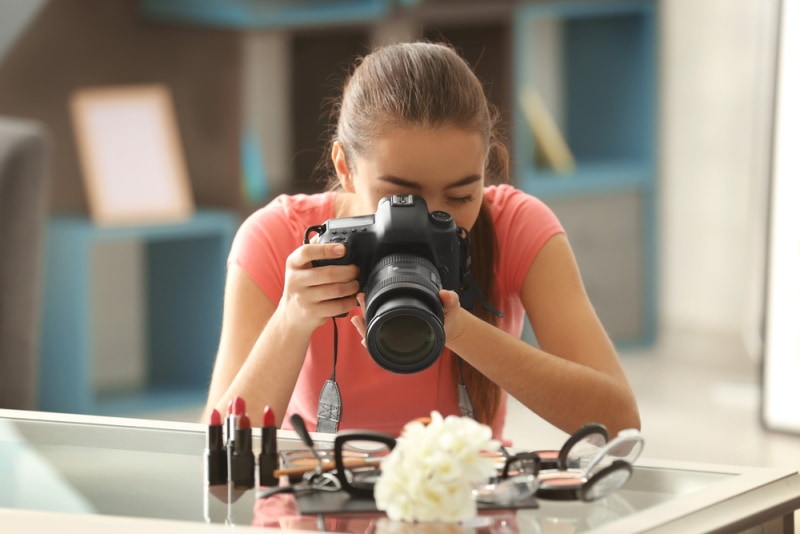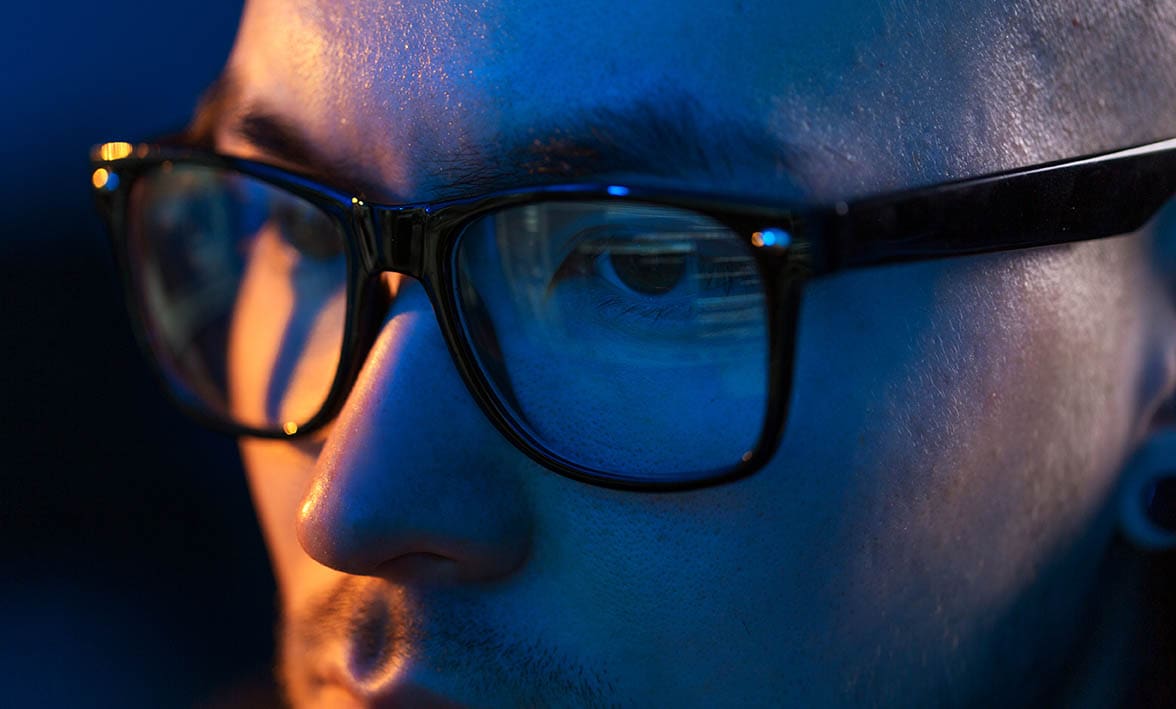12 Product Photography Ideas to Get You Inspired
Last Updated on

In this day and age, product photography is a vital part of almost every business. It’s important because it gives consumers that clear crisp image that they might need to make a final purchase decision.
You should strive to produce high-quality images, if the goal is to create a good first impression. This might not sound fair, but people tend to assume low-quality images equate to low-quality products. Even if you’re cash-strapped and working with a low-budget piece of equipment, they won’t give you a fair shot.
By the way, “high-quality” also implies that your images have to stand out. And for that to happen, you have to be someone with the ability to think creatively. If you’re experiencing some sort of creative slump, the following ideas might help get you started:

The Top 12 Product Photography Ideas to Get You Inspired
1. Neon Lights

| Skill Level: | Beginner |
Neon lights are light produced by gas. You’ve probably seen them in clubs, on billboards, or outside artists’ shops, because they are often used to make multicolored and dramatic signs. Product photography enthusiasts love using these lights, as they make images appear bright, colorful, and intricately crafted.
But there are a couple of things to take into consideration while using them. First off, you have to set the ISO low. This will ensure that the noise stays at a minimum. Secondly, you have to use a tripod or make sure your camera has an image stabilization tech. They’ll help regulate the shutter speeds.
2. Hanging Products

| Skill Level: | Intermediate |
Making images look as though they are levitating is one of the oldest tricks in the book. It’s actually as simple as you’d expect, but you have to be creative in the way you hang the product. You could either hang it in an unusual location or hang it in an unusual position.
The trick is to use thin wires or ropes to hold onto the product. They should be thin enough to make the editing easy, but not too thin to break due to the weight. Also, make sure the lighting is adequate.
3. Macro Photography

| Skill Level: | Intermediate |
This is a branch of photography that specializes in taking close-up shots of small objects. It doesn’t really matter where you’re taking the pictures, as long as the objects are magnified significantly.
More often than not, we hear people talk about “life-size” images while explaining what macro photography is, but what they don’t realize is, the object has to be the same size as the sensor or smaller. So, if you’re looking to take a picture using a sensor that’s two inches wide, the product has to be 2 inches or smaller. On top of that, it has to fill the frame.
4. Using the Product Weirdly

| Skill Level: | Beginner |
| Camera Type: | Bridge |
Let’s not forget photography is an art. And arts are synonymous with using weird methods to relay messages. Try and think of the different ways that that product can be put to use. Once you’re done, think of the ways it CAN NOT be put to use. Then circle those that have the potential of creating a unique shoot.
For example, if you’re marketing water bottles, you could take pictures of people using the product as a football. Or making food appear hot using a hair iron.
5. Photo Manipulation

| Skill Level: | Advanced |
Manipulated images usually make a greater impact and a lot of photographers consider them to be more influential than ordinary photos. Manipulated photos can be more potent and impactful than what was originally taken, especially for products.
But you’ll have to have the prerequisite high-level editing experience if you’re going to pull this off. Otherwise, you won’t know how to apply the basic principles of manipulating an image. They include image rendering, color blending, texturing, picking stock images, emphasizing details, and combining multiple images.
6. Reflective Surface

| Skill Level: | Advanced |
If you’re still learning the ropes, you’ll have to shelf this idea for someone else. Someone who totally understands the rules, and what it takes to tame the reflections created by such surfaces. Quite frankly, it all boils down to the usual principles of light. And one of those principles is reflection.
While taking shots of a reflective surface, you have to make sure the angle of your camera doesn’t equate to the angle of the light being reflected. Or else, all your images will have blown-out spots without texture.
7. Incorporate Some Personality

| Skill Level: | Intermediate |
Nobody said product images aren’t supposed to have models in them. Personality is the one thing that will help you define your business. Consumers are often more interested in the person behind the business than the business itself. And if they like you, they automatically like your products.
So go ahead and reach out to a modeling agency if you have to and hire a few faces to help you sell your product to the masses.
8. Unusual Angles

| Skill Level: | Beginner |
One of the many things that we love about photography is the fact that it provides you with more room to try out new things. For instance, if you’re tired of looking at images that have been shot at eye-level, you can create your own with unusual angles.
You really don’t need an app or costly equipment to find unusual angles—they are everywhere. You’re probably looking at one right this moment, and you just don’t know it yet. Of course, you’ll look like a mad man while trying to get the perfect shot, but it comes with the territory.
9. Freeze Frame

| Skill Level: | Advanced |
This form of photography is all about capturing the moment. And by that, we don’t mean the usual stuff like taking a picture of a kid smiling. Even though that would be cute, it’s more about seizing the moments that would have been impossible for us to see otherwise. For example, a picture of a cup falling, or one with coffee about to spill on the table.
Getting that perfect shot will require patience, incredible timing, and a whole lot of experience. You’ll need a very fast shutter speed and good lighting—it’s not easy to make time stop.
10. Props

| Skill Level: | Intermediate |
.We love using props to get a focal point that will help our images pop. Think of it this way: the object is like the main character in a movie, and the props are playing the supporting roles. It would be virtually impossible for the story to be interesting if you lack such characters in the movie.
But the props have to complement the product. You can’t just use random things that you’ve found lying on the floor, so choose wisely.
11. 360-Degree Shots

| Skill Level: | Advanced |
We’re all heard of cases where a consumer got a product thinking it’s something that will cater to their need, only to realize they bought something completely useless. Well, that’s probably because the image wasn’t three-dimensional. They could only see the front or the back and were not able to interact with the whole image.
This sort of problem can be avoided with 360-degree shots, but you’ll need a good camera for this—one that will definitely dent your bank account substantially!
•What Is a Diverging Lens? Photography Basics Explained

Frequently Asked Questions
How do you know a product photo is good?
If it’s an accurate representation of what you see, it’s usually good enough.
What we’re saying is that good-quality product images usually don’t have any lens distortion or look different from the actual subject. So if you get the sense that people might think it’s a different product, you should take another picture.
What does a product photographer do?
They take pictures just like everybody else, except in their case those pictures are only meant to be used commercially. In addition, the pictures are of products being sold.
How much do product photographers charge?
There is no fixed amount in this industry, as it all depends on several factors. You could be charged by the hour, day, image, or product. Experience and availability are also factors that contribute to their rates.

Summing Up
To create something unique, you have to be ready and willing to step out of the box. Of course, observing the rules of photography is important, but rules are meant to be broken. We got to learn how to produce catalog-worthy photos by rolling the dice and not by being timid.
If you have any other cool ideas that you’d like to share, you can always reach out.
See also:
- 19 Dog Photography Ideas to Get You Inspired
- 12 Narrative Photography Ideas to Get You Inspired
- 10 Candle Photography Ideas to Get You Inspired
- Converging vs. Diverging Lens: What’s the Difference?
Featured Image Credit: Szabo Viktor, Unsplash
About the Author Robert Sparks
Robert’s obsession with all things optical started early in life, when his optician father would bring home prototypes for Robert to play with. Nowadays, Robert is dedicated to helping others find the right optics for their needs. His hobbies include astronomy, astrophysics, and model building. Originally from Newark, NJ, he resides in Santa Fe, New Mexico, where the nighttime skies are filled with glittering stars.
Related Articles:
How to Clean a Refractor Telescope: Step-by-Step Guide
How to Clean a Telescope Eyepiece: Step-by-Step Guide
How to Clean a Rifle Scope: 8 Expert Tips
Monocular vs Telescope: Differences Explained (With Pictures)
What Is a Monocular Used For? 8 Common Functions
How to Clean a Telescope Mirror: 8 Expert Tips
Brightfield vs Phase Contrast Microscopy: The Differences Explained
SkyCamHD Drone Review: Pros, Cons, FAQ, & Verdict
